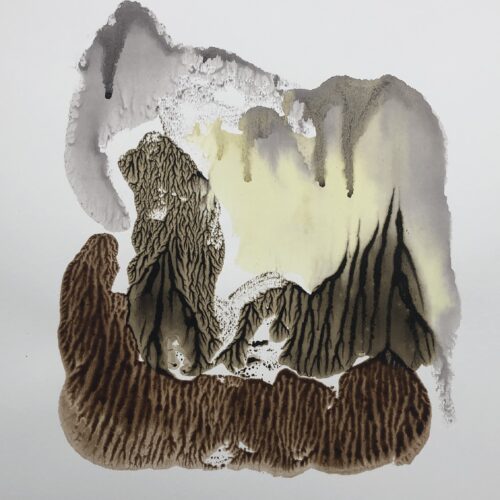
‘Dealing with the flood’?
OCA tutor, Helen Warburton recalls the discussion of image overload, and asks how do artists and designers deal with this now in the midst of a pandemic?

During lockdown, I’ve been revisiting a 2013 WeAreOCA blog post that posed a provocative question: how do we deal with the flood of images?
The discussion gravitated around photography in the age of the internet, and the work 24hrs of photos by Erik Kessels – an installation reminiscent of an undulating sea of images. Yet, this question continues to be perplexing for creative practitioners of all disciplines, especially in light of the pandemic. Recent events have forced our lives and worlds to shrink in physical terms, but grow exponentially online. The current situation highlights that it is no longer simply images we’re being overloaded by, but information.
The use of the term ‘flood’ in the previous post is interesting, but not unsurprising. For ‘liquid’ and meteorological metaphors have long been used by tech companies to make mass media familiar and attractive by conjuring ‘imaginary topographies’ (think ‘surfing’ the net; saving to the ‘cloud’; and content ‘streaming’). This language serves to both naturalise ‘big data’ and mystify its mechanisms, concealing many of its glitches, politics, and problems.(Henning 2018) As such, our seemingly incidental touchscreen taps, swipes, clicks, and scrolls online have become common currency, and what we see and how we see it has become a valuable resource, extracted for processes including dataset production in the development of artificial intelligence. For artists responding to these processes, see Anna Ridler’s Myriad (Tulips), Trevor Paglen’s Bloom, and Lewis Bush’s Ways of Seeing Algorithmically.
In 2013, the unstoppable flow of images was rationalised by photographer Alec Soth’s belief that ‘people are hungry for stories’. But how do we feel about this remark now? What kinds of stories are people actually ‘hungry’ for? And what capacity do we still have for engaging in stories that we are not ourselves telling, or at least having a stake in? As artists and designers, how do we navigate this? Do we accept that our stories may inevitably be lost at sea? Do we work with or against the flood?
Bibliography
Henning, M. (2018) ‘Streams and Flows’ in Photography: The Unfettered Image, Routledge, Oxon. 127-149.
|
|







I guess the lack of comments here reflects the complexity of this topic and the grade five difficulty of your questions, Helen! I’ll brave a response …
Whilst I do agree that we are always hungry for stories (this is intrinsic to the human condition), and images are the perfect tool for capitalist manipulation, surely the flood is also caused by our instinct to make marks on the world and a desire to share things in order to connect with others and have a sense of belonging? In this endless flood of images, we actually leave fewer traces as most digital images will never have a material existence. This overaccumulation and rapid turnover of images can make us feel overstimulated and unmoored and probably creates an anxiety to make even more noise.
I think we will have to accept that some of our stories will be lost at sea but if we can keep making authentic work it should resonate with someone. Luckily through social media, niche audiences can be reached in ways never possible before and developments in technology can create artificial scarcity which opens up new possibilities for artists in terms of income and copyright.
Thanks for a thought-provoking post. Hope some others will chip in too.